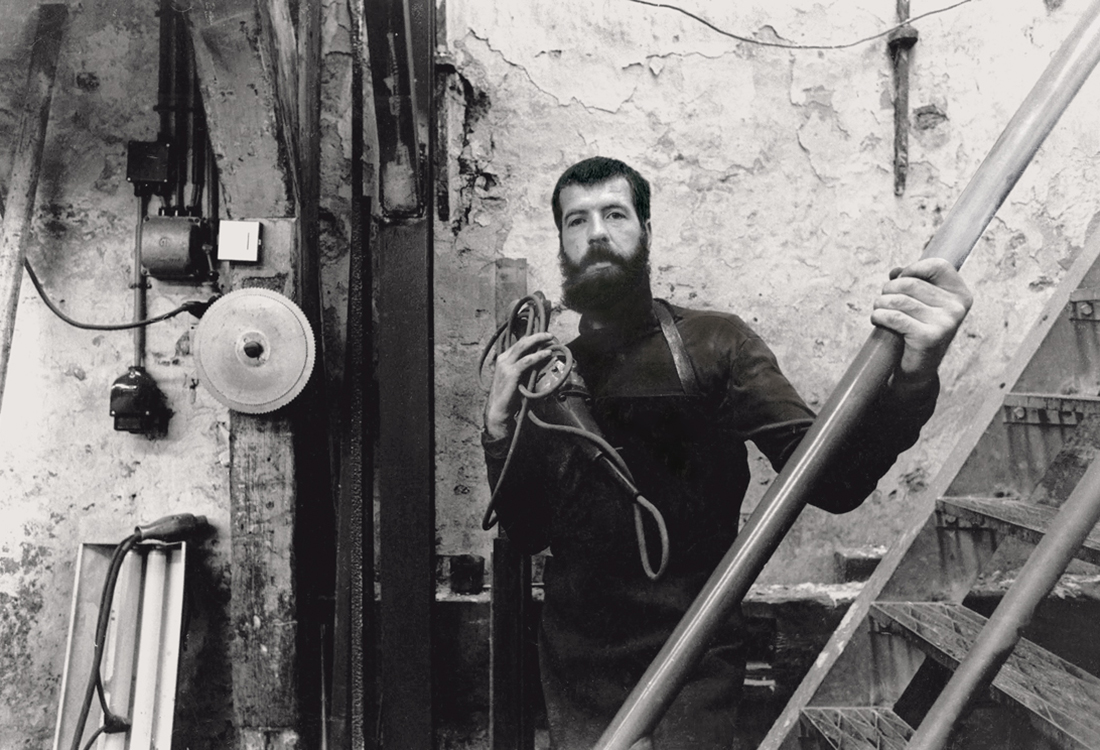
• 1960-1964
The Hague, Galerie Nouvelles Images (with Marry Hovig)
• 1965
Leiden, Hortus Botanicus, 'Era '65' - The Hague, Galerie Nouvelles Images
• 1967
The Hague, Pulchri Studio - Leiden, Galerie van der Vlist (with Rob Clous) - Leiden, Stedelijk Museum de Lakenhal
• 1969
Amsterdam, Museum Fodor, 50th anniversary of KLM /Heineken - Utrecht, Centraal Museum, 'Dutch Sculpture'
• 1964-1960 Den Haag, Galerie Nouvelles Images (met Marry Hovig)
• 1970
The Hague, Pulchri Studio - Lisse, Keukenhof - Hapert, 'Bellfires', plastics and reliefs - De Bilt, 'Sculptures in de Bilt 5' - The Hague, 'Dutch Art' - Leiden, Stedelijk Museum de Lakenhal, 'Double image' (with Jan Maaskant, curated by Rudi Fuchs) - The Hague, Galerie Nouvelles Images
• 1971 Middelheim, 11e Biënnale de la Sculpture; Keulen/Hannover, ‘Kunst und Handwerk aus den Niederländen’; Den Haag, Galerie Nouvelles Images (met Dick Cassee); Lisse, Keukenhof
• 1973 Turijn, Christain Stein, ‘Dutch Art’
• 1971
Middelheim, 11th Biennale de la Sculpture - Cologne/Hannover, 'Kunst und Handwerk aus den Niederländen', curated by R.W.D. Oxenaar - The Hague, Galerie Nouvelles Images (with Dick Cassee) - Lisse, Keukenhof
• 1977
Hapert, 'Bellfires Sculpture Frames 1980' - Leiden, studio exhibition - Alblasserdam, 'Wind and Water Objects' - Leiden, De Waag, manifestation 'Eleven Leiden artists'
• 1981 IJzer, Reizende tentoonstelling Nederlandse Kunststichting; De Bilt, ‘Beelden in de Bilt XV Windbeelden’; Leiden, De Waag, ‘Vijf Leidse Kunstenaars’
• 1981
Several locations, Iron, Travelling exhibition Dutch Art Foundation - De Bilt, 'Sculptures in the Bilt XV Wind Sculptures' - Leiden, De Waag, 'Five Leiden Artists'
• 1984
TH Delft, Inside-Outside, a vision of architecture' (with Carel Visser, David van de Kop, Marinus Boezem)
• 1985
Rhoon, 'Sculptures in Rhoon, a selection from 50 years of Dutch sculpture' - Bielefeld, Galerie Elf (with Burkhardt Soll)
• 1988
Rotterdam, Galerie Alles voor 12 & 24 Volt
1989
Wassenaar, 'Paradise Lost, Park raadhuis de Pauw' - Leiden, Beeld '89 Galerie Stelling - Rotterdam, STEK; Leiden, art in mupis - Leiden, Stedelijk Museum de Lakenhal, 'Leiden Ateliers, the 1980s'
• 1989-1990
Leiden, Stedelijk Museum de Lakenhal, 'The 1960s: Action, Art and Culture in Leiden'
• 1990
Leiden, Stedelijk Museum de Lakenhal, 'Collection 1890-1990' - The Hague, Galerie Nouvelles Images - Leiden, de Waag, '24 Leiden Artists'
• 1991 Leiden, Galerie Time is Art - Leiden, Hortus Botanicus (Orangery), The Beech - Amsterdam, Galerie Langenberg
• 1992
Leiden, Galerie Amber, 'Currents in Pancras West I - Leiden, Stedelijk Museum de Lakenhal, 'And then there was light'
• 1993
Leiden, Stedelijk Museum de Lakenhal, 'Five centuries of landscape'
• 1994
Leiden, Stedelijk Museum de Lakenhal, 'Images from the Leiden Collection' - Leiden, CBK, 'Viewed from a distance' (drawings) - Leiden, Ars Aemula Naturae 300 years
• 1994-1995
Heemstede, Het Oude Slot, 'Four Constructions for a Place' (with Bart Kelholt, Herbert Nouwens, Lon Pennock)
• 1996
Heemstede, Het Oude Slot, ‘The Color of the Skin’ - Leiden, Galerie Zichy, ‘transverse’ (with a.o. Pieter Geraedts)
• 1997
Leiden-Oegstgeest, ‘Three locations’
• 1998
Leiden, CBK, ‘Face to face’, artist portraits’ - Leiden, CBK, ‘Currents in Pancras West II’
• 2000
Heemstede, Het Oude Slot, 'Steel in the picture'
2001
Leiden, Galerie Next scorch-prints and drawings - Tytsjerk, ‘Scale & Size - Leiden, studio exhibition with Lon Pennock
•2002
Leiden, Stedelijk Museum de Lakenhal, ‘Image and counterimage. A Leiden Parade'
• 2003
Leiden, Stedelijk Museum de Lakenhal, ‘Light, Sky & Drama, landscapes from our own collection'
• 2006
Leiden, RAP Architectuurcentrum, ‘Circles of Four Artists' (with Kees Buurman, Pieter Geraedts, Thom Geraedts) - Woerden Stadsmuseum, ‘A link with landscape' (work from Stedelijk Museum de Lakenhal, Leiden with Krijn Giezen, David van de Kop, Carel Visser)
• 2007
Leiden, Stedelijk Museum de Lakenhal, ‘My Last Judgment'